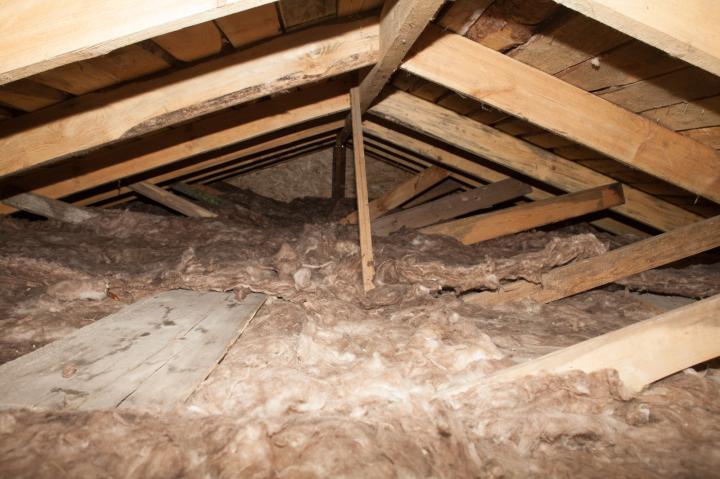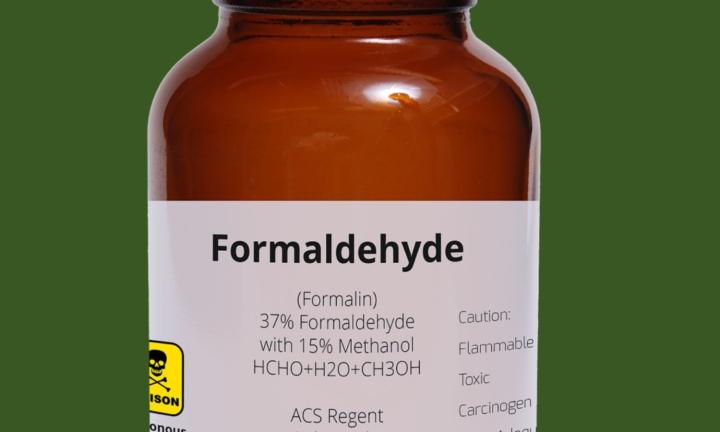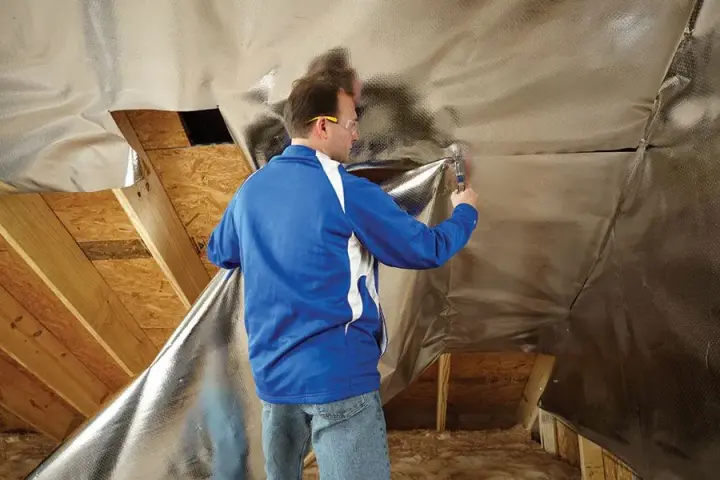Here's a question we get all the time: "How long does attic insulation actually last?" It's a fair question, especially if you're trying to decide whether to upgrade, wondering if that 20-year-old insulation is still doing its job, or evaluating a home you're thinking about buying.
The short answer? It depends. (We know, we know—everyone hates that answer.) But the reality is that insulation lifespan varies dramatically based on the type of material, installation quality, environmental conditions, and how well it's been maintained. Let's break down everything you need to know about how long different types of insulation last and when it's time to replace yours.
The Lifespan of Different Insulation Types
Not all insulation is created equal—and that includes how long it lasts. Here's what you can realistically expect from the most common types of attic insulation in North Carolina homes:
Fiberglass Insulation: 15-30 Years (Realistically)
Fiberglass is the most common type of insulation you'll find in North Carolina attics, whether in batts (those pink or yellow fluffy rolls) or blown-in loose-fill form. In theory, fiberglass can last 80-100 years because the glass fibers themselves don't really decompose.
But here's the catch: that's under perfect laboratory conditions. In the real world of North Carolina attics—with our humidity, temperature swings, occasional roof leaks, and the occasional critter visitor—fiberglass typically starts showing significant degradation around the 15-20 year mark.
What happens to fiberglass over time:
- Settling and compression reduce R-value (it can lose 30-50% of its effectiveness)
- UV exposure from attic lighting breaks down binding agents
- Moisture causes clumping and reduces air pockets that provide insulation
- Dust and debris accumulation weighs it down
- Physical damage from foot traffic or storage
If your home was built or insulated 15-20 years ago with fiberglass, it's definitely worth having it inspected to see if it's still performing at peak efficiency.
Cellulose Insulation: 20-30 Years
Cellulose—made from recycled paper products treated with fire retardants—is a popular eco-friendly option. When properly installed with adequate air sealing, cellulose insulation typically lasts 20-30 years.
However, cellulose starts showing degradation around the 15-year mark if it wasn't installed correctly or if there are moisture issues. Being paper-based, cellulose is particularly vulnerable to water damage.
What affects cellulose longevity:
- Moisture is the enemy—wet cellulose can mold, rot, and lose all insulating properties
- Settling over time (can lose 15-20% of volume)
- Low humidity can cause fiber separation
- Pest damage (rodents actually kind of love making nests in it)
- Quality of fire retardant treatment (some break down faster than others)
The good news? Cellulose that stays dry and was properly installed can absolutely reach that 30-year mark and even beyond.
Spray Foam Insulation: 80-100+ Years
Now we're talking longevity! Spray foam insulation—both open-cell and closed-cell varieties—is the marathon runner of the insulation world. When installed correctly by professionals, spray foam can literally last the lifetime of your house.
Closed-cell spray foam is particularly durable and resistant to moisture, making it ideal for North Carolina's humid climate. Unlike other insulation types, spray foam doesn't settle, compress, or degrade significantly with time.
Why spray foam lasts so long:
- Doesn't rely on air pockets (it's a solid, stable material)
- Resists moisture and doesn't absorb water (especially closed-cell)
- Not attractive to pests
- Doesn't settle or sag over time
- Adds structural rigidity to the building
- Self-sealing against air infiltration
The main caveat? Spray foam does develop minor microcracks from extreme temperature cycling over 15-20 years, but these don't significantly impact performance the way settling does with other insulation types.
Mineral Wool (Rockwool): 50-100 Years
Less common in residential attics but worth mentioning, mineral wool (rockwool) is incredibly durable and can last 50-100 years. It's fire-resistant, water-resistant, and doesn't compress like fiberglass. If you have rockwool insulation, you've got one of the longest-lasting options out there.
What Actually Causes Insulation to Fail?
Age is just a number—it's really about what happens to the insulation over those years. Here are the most common culprits that shorten insulation lifespan in Greensboro-area homes:
1. Moisture and Water Damage
This is the number one insulation killer in North Carolina. Our humid climate combined with occasional roof leaks, condensation issues, or poor ventilation creates the perfect storm for insulation damage.
What moisture does:
- Causes fiberglass and cellulose to clump and compress
- Dramatically reduces R-value (wet insulation can lose 50-70% of effectiveness)
- Promotes mold and mildew growth
- Leads to wood rot in surrounding structures
- Creates unpleasant odors
Even if insulation dries out after getting wet, it rarely returns to its original effectiveness. Water-damaged insulation usually needs to be replaced.
2. Settling and Compression
Gravity is real, folks. Over time, loose-fill insulation naturally settles and compacts, which reduces the air pockets that provide insulating value. Fiberglass batts can also compress if anything is placed on top of them (looking at you, holiday decoration storage).
Settling is especially problematic because it happens gradually—you might not notice you've lost 3-4 inches of insulation depth until you actually measure it.
3. Pest Damage
Mice, squirrels, raccoons, and even insects can wreak havoc on attic insulation. They nest in it, tunnel through it, compress it, and contaminate it with droppings and urine. Beyond the physical damage, pest contamination creates health hazards that make insulation replacement necessary.
If you've had a pest problem in your attic (check out our guide on DIY attic inspections to spot the signs), you'll likely need to replace affected insulation even if it's relatively new.
4. Poor Installation
Insulation that wasn't installed properly may underperform from day one and degrade faster. Common installation mistakes include:
- Gaps and voids in coverage
- Blocking soffit vents (causes ventilation and moisture problems)
- Compressing batts to make them fit
- Insufficient depth for the target R-value
- Not air-sealing before insulating
Quality installation matters almost as much as the material itself. That's why we emphasize proper installation techniques with every job we do.
5. UV and Environmental Degradation
Attics get HOT in North Carolina—we're talking 130-150°F in the summer. These temperature extremes, combined with UV exposure from any lighting or skylights, can break down the binding agents in fiberglass and cause all insulation types to age faster than they would in milder climates.
Clear Signs Your Insulation Needs Replacing
So how do you know if your insulation has reached the end of its useful life? Watch for these telltale signs:
1. Skyrocketing Energy Bills
If your heating and cooling costs have been creeping up year over year without explanation, your insulation has probably lost effectiveness. A sudden 15-20% increase in energy bills is a red flag worth investigating.
2. Inconsistent Temperatures Throughout Your Home
Hot and cold rooms that never quite reach the temperature of the rest of the house often indicate insulation problems. If your bedroom feels like a sauna in summer and an icebox in winter while the living room stays comfortable, it's time to check the insulation above that problem area.
3. Your HVAC System Runs Constantly
Poor insulation forces your heating and air conditioning to work overtime trying to maintain comfortable temperatures. If your HVAC seems to run non-stop, especially during temperature extremes, inadequate or failing insulation is likely to blame.
4. Physical Damage You Can See
During an attic inspection, look for:
- Flattened, compressed, or matted insulation
- Discoloration or water stains
- Crumbling or falling apart
- Significant settling (you can see floor joists clearly)
- Torn or damaged batts
- Mold or mildew growth
- Animal damage or contamination
5. Drafts and Air Leaks
Feel air movement around light fixtures, outlets, or the attic hatch? That suggests not only air sealing issues but potentially compromised insulation that's no longer forming an effective thermal barrier.
6. Ice Dams in Winter
While we don't get heavy snow in Greensboro often, when we do, ice dams are a clear sign of heat escaping through your roof—which means your insulation isn't doing its job.
7. Pest Evidence
Any signs of rodents or other pests in your attic likely means your insulation has been contaminated and should be replaced for health and performance reasons.
Can You Extend Your Insulation's Lifespan?
Absolutely! Here are proven ways to maximize how long your attic insulation lasts:
Maintain Proper Ventilation
Good attic ventilation prevents moisture buildup and reduces extreme temperature swings. Make sure soffit vents, ridge vents, and any attic fans are clear and functioning. (Pro tip: radiant barriers can dramatically reduce attic temperatures in our hot summers, taking stress off your insulation.)
Address Leaks Immediately
The moment you notice a roof leak or any water intrusion, get it fixed. The longer moisture sits in your insulation, the more damage it causes.
Keep Pests Out
Seal any entry points where rodents or other animals might access your attic. Screen vents appropriately and address any structural gaps.
Don't Use Your Attic for Heavy Storage
Placing heavy items directly on insulation compresses it and reduces effectiveness. If you must store things in the attic, build a proper platform above the insulation rather than setting boxes directly on it.
Schedule Regular Inspections
Check your attic annually or semi-annually for any issues. Catching problems early—whether it's a small leak, pest activity, or settling—can prevent having to replace all your insulation prematurely.
Combine Insulation Types Strategically
Sometimes the best approach is layering different insulation types. For example, adding blown-in insulation on top of existing (but still good) fiberglass batts can extend the overall life of your attic insulation system while boosting R-value.
When Should You Add vs. Replace?
Here's a practical question: if your insulation is getting old but not obviously damaged, should you replace it entirely or just add more on top?
Add More Insulation If:
- Existing insulation is dry, clean, and in good condition
- No signs of mold, pests, or water damage
- Simply insufficient depth for current R-value recommendations
- Settled over time but still relatively intact
In many cases, adding blown-in insulation on top of existing material is the most cost-effective way to upgrade your home's thermal performance, especially if what's already there is still functional.
Replace Entirely If:
- Visible water damage or mold growth
- Pest contamination
- Severe compression or degradation
- Insulation is 25+ years old and showing multiple issues
- You're doing other attic work anyway (roof replacement, etc.)
Complete removal and replacement gives you a clean slate and the opportunity to properly air seal before installing new insulation—which dramatically improves performance.
The Bottom Line: Don't Wait Until It's Too Late
Most homeowners don't think about their attic insulation until something goes obviously wrong—extreme energy bills, comfort problems, or discovering damage during an unrelated repair. But being proactive can save you thousands in energy costs and prevent more expensive problems down the road.
Here's our honest recommendation: if your insulation is 15+ years old, get it professionally inspected. Not all 20-year-old insulation needs replacing, but all of it should be evaluated to determine current condition and performance.
At 4 Seasons Insulation, we offer free, no-pressure attic inspections where we'll:
- Assess your current insulation type, depth, and condition
- Measure actual R-values and identify any gaps or thin spots
- Check for moisture issues, ventilation problems, and pest activity
- Give you honest recommendations—whether that's doing nothing, adding more, or complete replacement
- Provide a detailed estimate if any work is needed
We specialize in Climate Pro blown insulation (formaldehyde-free and eco-friendly) that's perfect for both new installations and topping up existing insulation. And because we understand North Carolina's unique climate challenges, we also offer AtticFoil radiant barriers that work alongside traditional insulation to combat our intense summer heat.
The truth is, insulation isn't forever—but with proper care and timely upgrades, it can serve you well for decades. Don't let aging insulation silently cost you money every month. Contact us today to schedule your free attic inspection and find out exactly what condition your insulation is in.
Serving Greensboro and surrounding areas with honest assessments and quality insulation solutions since day one. Because your comfort and your wallet both matter.





